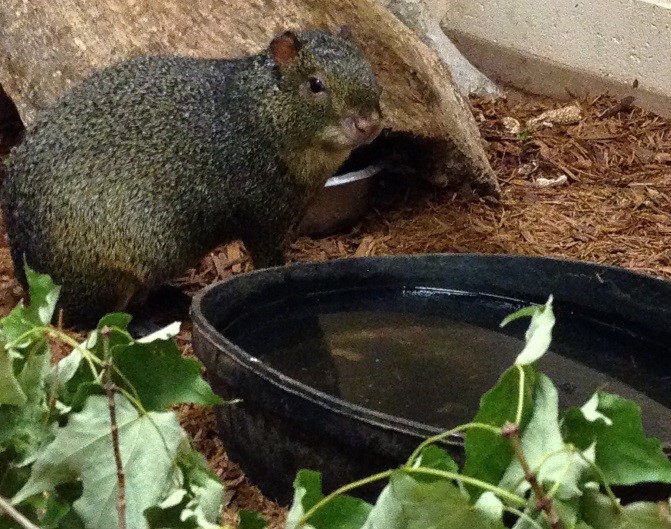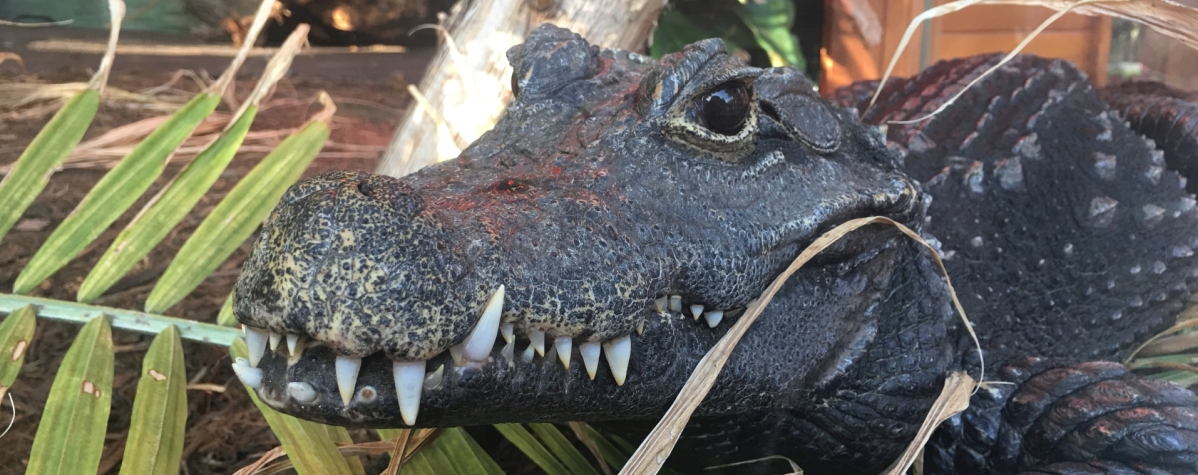Red-rumped Agouti
Scientific Classification
| Species | Dasyprocta leporina |
| Kingdom | Animalia |
| Phylum | Chordata |
| Class | Mammalia |
| Order | Rodentia |
| Family | Dasyproctidae |
| IUCN Status | Least concern |
Appearance and lifespan
The Red-rumped Agouti, a member of the rodent family, is native to the rainforests of Central and South America. Resembling a large guinea pig, Agoutis are covered in long, coarse hairs that expel an oily, and stinky substance used to repel water. Unlike most members of the rodent family, agoutis walk on their toes, rather than flatfooted. They have hoof like claws that allow them to run quickly through the forest floor. As their name implies, the Red-rumped Agouti is distinguishable from other member of the same family by its reddish coloured rump and orange to brown coloured underside.
The Red-rumped Agouti possesses very large front incisors, which grow continuously throughout their lifetime. These incisors are made up of multiple layers of twisted enamel and are among the strongest in the animal kingdom. They can even be used to break the notoriously tough husk of the Brazil nut. Adult Agoutis range in size from 3 to 5.9 kg (6 to 13 lb) and measure 49 to 64 cm (19 to 25 in) in length with the females being slightly larger. On average, Red-rumped Agoutis can live from 15 to 20 years, both in the wild and captivity.
Behavior and reproduction
The Red-rumped Agouti is found in large family groups, consisting of a monogamous breeding pair and their offspring. Mating takes place, year round and gestation lasts up to 120 days, with one to four offspring born to a litter. Young are born with their eyes open and are able to flee a predator within only an hour of their birth. They are a diurnal animal, most active during the day, and spend the majority of their time foraging for food throughout the forest underbrush. They are also known to follow troops of monkeys for days, taking advantage of any food droppings along the way. If threatened, agoutis use a variety of distress calls and postures to ward off predators, including foot stomping, puffing up their hair and grunting.
Ecology and conservation
As the only animal capable of opening the thick husk of a brazil nut, the agouti is at the center of conservation for people who rely on these trees in areas of South America. The Agouti acts as a seed dispenser, a decline in the Agouti population could also result in a serious impact to rainforests that grow these magnificent trees.
Food at the Zoo
At Riverview Park and Zoo, the Red-rumped Agouti diet is compromised of various fruits and vegetables, in addition to a specially formulated “guinea pig” pellet.
Threats
Major threats to the Red-rumped Agouti include over hunting by humans and loss of habitat from deforestation.
Did you know?
- The Red-rumped agouti can jump up to 6 feet (1.8 meters) straight up into the air from a standing position.
- The agoutis scientific name, Dasyproctidae, means “fuzzy bum”.
- Red-rumped agoutis are able to run within an hour of being born.
Adopt the red-rumped agouti
Become a part of the the Riverview Park and Zoo family through our Adopt an Animal Program!


